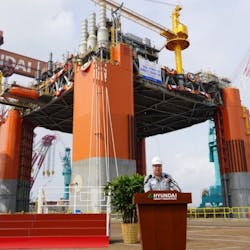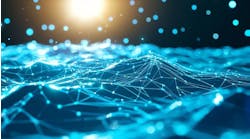The events of 2020 forced the offshore oil and gas industry into a new way of working and accelerated the decarbonation of upstream activities. The subsea market adapted to the rapidly changing environment and continued to execute the projects that were well under way. Many of the projects include new technologies and innovative development approaches that reduce costs, accelerate cycle time to first production, enable access to challenging reservoirs, and reduce carbon emissions.
Meanwhile, oil demand is recovering and trending toward pre-covid levels as business and leisure travel pick up. This bodes well for the subsea market as the industry builds a new pipeline of projects. The competitive elements of a subsea tieback, i.e., low cost, short cycle, are even more important today as the industry focuses on cost-effective, sustainable development solutions.
The world’s largest subsea forum returns this August, hosted by Murphy Exploration & Production Co., a subsidiary of Murphy Oil Corp., with renewed vigor and optimism as the industry charts a new path amid the rapidly changing energy landscape. The site for this year’s forum, Aug. 31 – Sept. 2, is Moody Gardens Hotel & Convention Center in Galveston, Texas. Following is a selection of the topics that will be discussed at the forum.
New technology
New subsea technologies and innovative development methods are improving oil recovery, enabling access to new resources, and lowering the carbon footprint. An example of an innovative secondary recovery project is Talos Energy’s dumpflood in the Gulf of Mexico. It is the first of its kind in the GoM deepwater. Dumpflood is a secondary recovery method used when a higher-pressure aquifer is completed in the same wellbore as a lower-pressure target oil zone in need of water injection (typically performed in shelf and onshore wells). Since dumpflood injection occurs in a closed system within the same wellbore, the process is less problematic than a conventional waterflood where scaling, corrosion, plugging, souring, etc. are common occurrences. An initial injection rate of 20,000+ b/d of water was achieved via “smart” sleeves. Water injection has led to a significant increase in pressure and rate in the producers’ wells. This low-footprint and lower-complexity project is bound to increase recovery from the field in a cost-effective manner.
Another first in the GoM deepwater is the development of a 20,000-psi project – Chevron-operated Anchor. The project required a qualification program for subsea and drilling and completion, and incorporated simplification and supplier-led solution concepts while navigating through a challenging economic environment. Anchor is currently in execution with plans to complete delivery of all subsea equipment in 2022.
Meanwhile, the electrification of subsea is gaining momentum as a cost-effective, low-carbon solution. Equinor is leading a group of operators, contractors, and suppliers on the development of an all-electric control system portfolio to replace existing electrohydraulic systems for a standardized water depth. This system will fit in the “Subsea Factory” which includes electric chokes, manifolds, and process valves. The program incorporates a system approach that covers the platform topside, subsea production system, and downhole components. The primary objective of this Equinor-led initiative is the development of an industry standard approach, while qualifying the safety, cost efficiency, project execution plan, and operational flexibility.
Concept selection
Chevron has selected a concept for the development of Ballymore – the first Norphlet asset in the GoM. The selected development concept expands the production capacity of the Blind Faith floating production unit and uses the available riser and umbilical slots. Ballymore will tieback through a subsea production system designed to accommodate the high pressures and temperatures and unique fluid properties associated with the Norphlet trend. Tying the Norphlet asset into an existing Miocene-based production facility presents unique design challenges.
Project execution
Murphy is following an optimized project development strategy leveraging project execution and operational synergies with the tieback of three GoM fields – Khaleesi, Mormont, and Samurai – to the newbuild King’s Quay floating production facility. The initial phase of the development consists of seven wells that will be drilled and completed in parallel with the installation of the SURF facilities and King’s Quay FPS. The integrated project team implemented an execution strategy to minimize clashes between SURF, platform installation, and drilling and completion activities. First production is expected in the first half of 2022.
Hess followed a new project execution approach, dubbed Intra-structure Lead Exploration (ILX), to accelerate first oil from its Esox field in the GoM. The ILX approach aligned the exploration and production groups to optimize the success case and achieve first oil in four months from discovery. The integrated team consisted of the reservoir and drilling teams in exploration as well as the drilling and completions teams in production, SURF team, operations, and global supply chain. First production from Esox flowed to Tubular Bells in early 2020.
Fieldwood Energy faced technical and commercial challenges with the development of Katmai in the GoM. The operator, with budget and schedule constraints in mind, selected an EPCI strategy to develop the 26-mile, single flowline tieback system for two planned high-pressure oil wells. Katmai is connected to the Tarantula platform.
Subsea inspection, maintenance
Advances in underwater robotics and digital solutions are reducing the cost of subsea inspection, maintenance, and repair activities. Chevron has applied digital solutions that are demonstrating the value to integrity management, life extension, controlling installation cost, and support of simplified field architecture to reduce operating cost.
LLOG is using its subsea integrity management program to proactively mitigate operating risk on existing infrastructure. The operator also uses the program to collect intelligence to enhance front end design of new projects and systematically manage the life extension process.
Murphy faced a series of challenges during the development of its Calliope field. These included construction, commissioning, and operational issues presented by a third-party brownfield bolt on the tieback to the Na Kika production facility in the GoM.
For more information on Subsea Tieback 2021, please visit www.subseatiebackforum.com.




